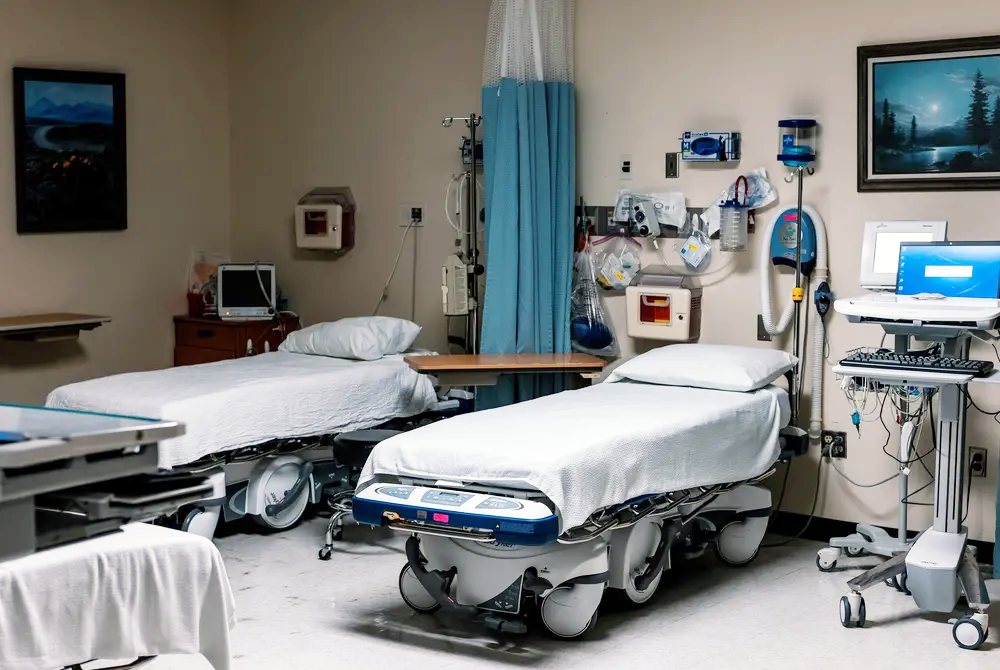By Reese Oxner, The Texas Tribune
Dozens of Texas hospitals have run out of intensive care unit beds as COVID-19 surges faster than any other time during the pandemic, propelled by the new delta variant.
The state is divided into 22 trauma service areas, and half of them reported 10 or fewer available ICU beds on Sunday. As more than 9,400 COVID-19 patients fill the state’s ICUs, which are reserved for the patients who are the sickest or most injured, the trauma service area that includes Laredo reported no available ICU beds, while the area that includes Abilene reported having one.
At least 53 Texas hospitals have no available ICU capacity, according to numbers reported to the federal government during the week ending Aug. 5. In Austin, five hospitals were at or above 90% of their ICU capacity during the same period, with two reporting no available ICU beds.
“This surge is by far the fastest and most aggressive that we’ve seen. Almost all of our hospitalizations are due to unvaccinated patients developing severe illness,” Dr. Desmar Walkes, Austin-Travis County’s health authority, told reporters last week. “ICU staff are seeing a younger population in our hospitals. Patients in the ICU are sicker and stay in the hospital longer than with prior surges, putting more strain on hospital resources.”
Around 87.1% of all hospital beds in Texas are in use — the highest level since the start of the pandemic — with 14.1% of those beds occupied by COVID-19 patients. When Gov. Greg Abbott began to relax some COVID-19 restrictions on businesses in October, his order maintained reduced restaurant capacity and kept bars closed in regions in which 15% or more of hospital beds were filled with COVID-19 patients.
This week, COVID-19 hospitalizations reached higher levels across the state than when Abbott imposed a statewide mask mandate in July 2020. Abbott has maintained that he will not be reviving the mask mandate and has barred local authorities from issuing their own.
“Governor Abbott has been clear that we must rely on personal responsibility, not government mandates,” Abbott press secretary Renae Eze said in a statement on Monday. “Every Texan has a right to choose for themselves and their children whether they will wear masks, open their businesses, or get vaccinated.”
Medical professionals are afraid that hospitals will become so overwhelmed by COVID-19 patients that they won’t have space for new patients — a situation that many hospitals faced during previous COVID surges.
“We need to make sure that there’s beds and hospitals and staff in hospitals available to take care of people who don’t just have COVID-19, but … all of those other conditions,” said Dr. Jennifer Shuford, chief state epidemiologist for the Texas Department of State Health Services. “As we see hospitalizations increasing at this rapid rate, we are afraid that we’re going to stress hospitals to the point that they can’t take care of some of those other people who are coming in to the hospital for a stroke or a heart attack or any number of other things.”
Already, Shuford said she’s heard of hospitals that can’t accept patient transfers from other hospitals because they have no beds open.
Dr. David Callender, president and CEO of Memorial Hermann Health System, a 17-hospital system spanning southeast Texas, said the “onslaught” of people hospitalized with COVID-19 during the recent surge could overwhelm its capacity if the current trend continues.
The system now has more than 800 people hospitalized with COVID-19, with nearly a third of its ICU beds occupied by COVID-19 patients, he said. At times, he said hospitals have had no pediatric ICU beds available and had to transport young patients across the state or even out of the state.
“Everybody who’s unvaccinated needs to get a vaccine,” he said. “That’s what will keep us out of those terrible situations where people need care in a hospital and they can’t get it.”
As of Saturday, 44.4% of Texans have been fully vaccinated. According to Becker’s Hospital Review, Texas ranks 37th nationally for the percentage of the eligible population vaccinated.
Walkes said vaccination is still the best hope for blunting the current COVID-19 surge.
“We don’t want you to be that person that has to choose a ventilator instead of a vaccine,” she said.
RELATED READING




